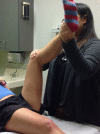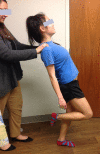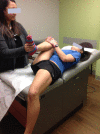Evaluation and management of lower back pain in young athletes
- PMID: 28795014
- PMCID: PMC5532202
- DOI: 10.21037/tp.2017.06.01
Evaluation and management of lower back pain in young athletes
Abstract
Lower back pain in young athletes is a common problem. The prevalence of back pain from different causes in adolescent age group is between 20% and 30%. However, the incidence of low back pain in young athletes varies widely in different sports. Overuse injuries are the most common cause of low back pain in young athletes. In case of overuse injuries, the cause and effect relationship between back pain and specific condition is often difficult to establish. In adolescent athletes, the most common underlying identified cause of low back pain is lumbar spondylolysis. During adolescent growth spurt, the severity of the pain generally correlates with adolescent growth spurt. Participation in sports starting at an early age and for a longer duration tends to increase the risk for back pain. Numerous conditions cause low back pain in athletes. These include acute trauma, chronic overuse or repetitive trauma, and referred pain. Our focus in here will be on selected conditions that cause recurrent or chronic low back pain.
Keywords: Scheuermann disease; Scoliosis; apophyseal ring fracture; disc herniation; sacroiliac joint dysfunction; spondylolysis.
Conflict of interest statement
Conflicts of Interest: The authors have no conflicts of interest to declare.
Figures




References
-
- Ferguson RL. Thoracic and lumbar spine trauma of the immature spine. In: Herkowitz HN, Garfin SR, Eismont FJ, et al. editors. Rothman-Simeone The Spine. 5th edition. Philadelphia: Saunders, 2005: 603-12.
-
- Curtis C, d’Hemecourt P. Diagnosis and management of back pain in adolescents. Adolesc Med State Art Rev 2007;18:140-64, x. - PubMed
Publication types
LinkOut - more resources
Full Text Sources
Other Literature Sources
